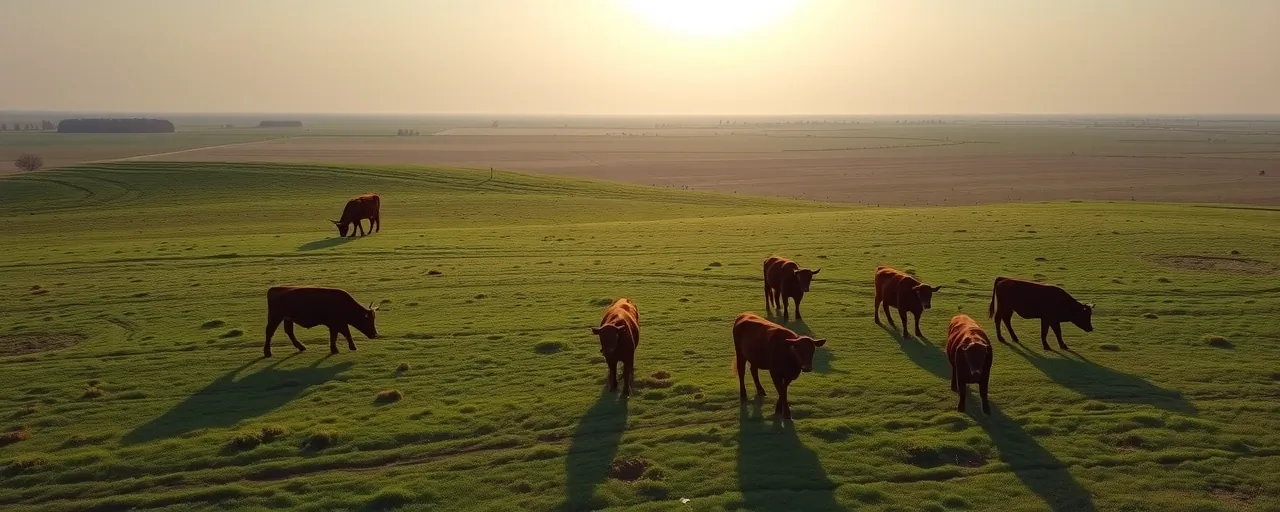A Pest That Packs a Punch
A small fly is creating big problems for farmers across North America. The New World Screwworm, a parasitic insect, has surged in southern Mexico, endangering livestock with its flesh-burrowing larvae. If unchecked, it could devastate herds, disrupt markets, and raise food prices. The U.S. Department of Agriculture, under Secretary Brooke Rollins, is partnering with Mexican officials to halt the pest’s northward march before it crosses the border.
The threat extends beyond ranches. Livestock losses could strain supply chains, making meat costlier for consumers. This urgency has driven both nations to collaborate closely, pooling expertise and resources to protect their agricultural economies. The effort is intense, reflecting the high stakes for farmers, consumers, and policymakers alike.
A Cross-Border Battle Plan
For decades, the U.S. and Mexico have teamed up to fight the screwworm using the sterile insect technique. This method involves releasing millions of sterilized male flies to mate with wild females, gradually reducing the pest population. The Panama-United States Commission for the Eradication and Prevention of Screwworm, located in Panama, currently supports 44 weekly flights, dispersing 100 million sterile flies over affected Mexican regions.
To bolster this strategy, the U.S. is investing $21 million to upgrade a facility in Metapa, Mexico, previously used for fruit fly control. Once operational, it will produce 60 to 100 million additional sterile flies weekly, significantly expanding the campaign to push the screwworm southward. This investment underscores a shared commitment to protecting agriculture through innovative science.
The partnership goes beyond fly releases. Both nations are intensifying surveillance and restricting animal movements to curb the pest’s spread. Since May 2025, the U.S. has suspended imports of live cattle, horses, and bison from Mexico, with monthly reviews to balance biosecurity and trade. Teams from the U.S. Animal and Plant Health Inspection Service work alongside Mexican counterparts, conducting field assessments and sharing data to refine their approach.
The Bigger Picture for Food Security
Invasive pests like the screwworm carry hefty economic costs. Since 1960, such species have caused over $2.2 trillion in global damages, with U.S. agriculture losing $21 billion annually to insects, weeds, and diseases. A screwworm outbreak could amplify these losses, threatening rural livelihoods and driving up food prices for consumers.
Global food systems face growing challenges, from extreme weather to trade disruptions. The screwworm outbreak highlights how vulnerabilities in one region can affect markets worldwide. By tackling this pest, the U.S. and Mexico are helping stabilize a critical link in the global food chain, ensuring steady supplies and affordable prices.
This effort also showcases the power of international collaboration. Frameworks like the Food and Agriculture Organization’s One Health initiative and the World Organisation for Animal Health’s standards enable nations to share knowledge and resources. The U.S.-Mexico partnership exemplifies this, combining cutting-edge technology with practical policy to address a shared threat.
A Path Forward With Resolve
The campaign against the screwworm is gaining traction, but challenges remain. The Metapa facility’s expansion, paired with vigilant surveillance and import restrictions, equips both nations to contain the pest. Ongoing technical exchanges and field visits ensure strategies adapt to new developments.
History offers encouragement. The screwworm was eradicated from Mexico in 1991 through similar binational efforts, proving what dedication can achieve. Yet, today’s complexities—rising costs, climate pressures, and trade demands—require unwavering focus. Both nations are drawing on past successes while addressing current realities.
For consumers, this work underscores the unseen efforts behind their grocery shelves. Protecting livestock from pests like the screwworm helps keep food affordable and available. As the U.S. and Mexico forge ahead, their collaboration offers a blueprint for tackling global challenges through science, partnership, and persistence.
